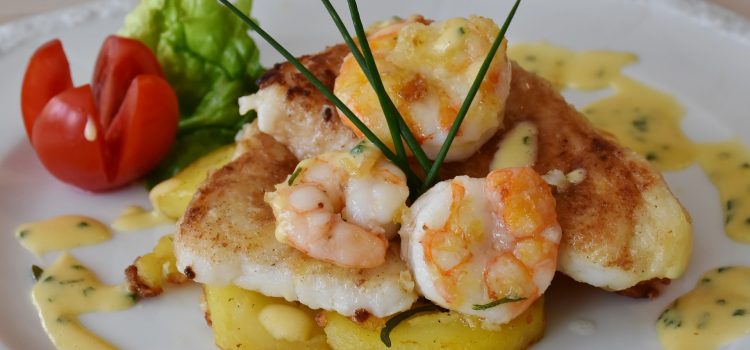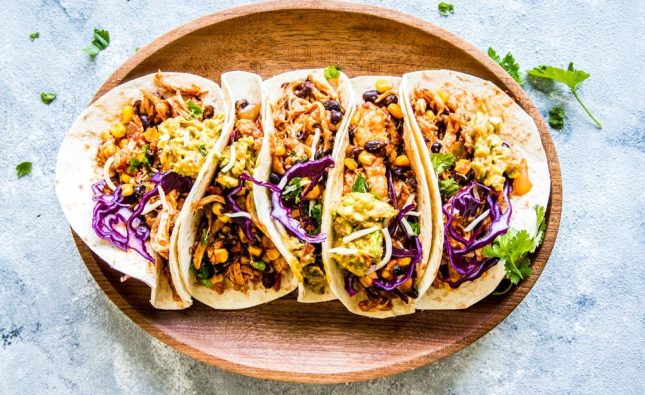
Are you a seafood lover looking to elevate your cooking game? Look no further than the delicious and versatile salmon. With its tender, flaky texture and rich flavor profile, salmon is a crowd-pleaser that can be prepared in countless ways. But with so many different types of salmon available at the grocery store and various cooking techniques out there, it can be overwhelming to know where to start. That’s why we’ve compiled the top salmon secrets revealed for achieving perfectly cooked fish every time. From choosing the right type of salmon to mastering different cooking methods, read on for all the tips you need to become a salmon pro in your own kitchen!
The Different Types of Salmon
Salmon is a broad term that encompasses many different species of fish, each with its unique characteristics and flavors. The most common types of salmon available in grocery stores are Atlantic, Chinook (King), Coho (Silver), Sockeye (Red), and Pink.
Atlantic Salmon is one of the most popular types due to its mild taste and easy availability. It’s commonly farmed and has a high-fat content which makes it great for smoking or grilling.
Chinook Salmon or King Salmon has a rich, buttery flavor with tender meat that flakes easily when cooked. This type tends to be larger than other species, making it perfect for roasting or baking.
Coho Salmon or Silver Salmon has a milder flavor than chinook but still offers a robust taste. Its firm texture makes it ideal for pan-searing, grilling, broiling or baking.
Sockeye Salmon or Red Salmon is known for its deep red color and strong flavor profile. It’s best grilled on cedar planks as this method brings out the best flavors from this fish.
Pink salmon comes in at an affordable price point compared to other salmon varieties but has a lower fat content resulting in less flavor intensity. Due to its low cost, pink salmon may be used in recipes like sandwiches, salads etc., where subtle tastes are preferred over the stronger ones.
Each variety of salmon brings something unique to the table; so next time you’re at your local supermarket looking for some fresh fish remember these differences before deciding on what kind will suit your meal!
How to Choose the Right Salmon for Your Meal
Choosing the right salmon for your meal is a crucial step towards ensuring that you end up with a delicious and satisfying dish. Here are some tips on how to make the right choice:
1. Freshness: Look for shiny, firm flesh with no signs of discoloration or dryness, and avoid fish that has been sitting on ice for too long.
2. Type: There are different types of salmon, including Chinook (also known as King), Sockeye (Red), Coho (Silver), Pink, and Atlantic. Each type has its unique taste and texture, so choose based on your preference.
3. Wild vs Farmed: Wild-caught salmon tends to have more flavor than farmed ones since they feed in their natural habitat; however, farmed ones can still be a good option if sourced sustainably.
4. Size: The size of the fish affects cooking time; larger cuts take longer to cook than smaller ones.
By following these simple rules while choosing salmon for your recipe will ensure that you get great results every time!
How to Prepare Salmon for Cooking
Preparing salmon for cooking is an important step to ensure that your dish turns out delicious and juicy. Let’s dive into the different ways you can prepare salmon for cooking.
Firstly, make sure to remove any bones from the salmon fillet using a pair of tweezers or fish pliers. This will prevent any choking hazards when eating.
Next, rinse the salmon fillet under cold water and pat it dry with paper towels. This helps to remove any excess moisture that could affect the texture of your cooked fish.
Now it’s time to season your salmon! You can use a variety of herbs, spices, and marinades depending on your taste preferences. A simple yet flavorful seasoning includes olive oil, lemon juice, salt and pepper.
If you’re grilling or baking your salmon fillet, consider scoring the skin lightly with a sharp knife before adding seasoning. This helps the heat penetrate through to cook more evenly while still maintaining its flavorsome crispy skin!
Let your seasoned salmon rest in room temperature for about 15-20 minutes before cooking. This allows for even cooking throughout without drying out too quickly on high heat!
The Best Methods for Cooking Salmon
When it comes to cooking salmon, there are many methods to choose from. Each method brings its own unique taste and texture to the fish.
One popular technique is grilling. Grilled salmon can be marinated beforehand with a variety of herbs and spices for added flavor. It’s important to oil the grill before placing the fish on it so that it doesn’t stick. Cook until browned on both sides and serve with your favorite sides.
Another option is baking in an oven. Baking allows for flavors to meld together while keeping moisture locked in through aluminum foil or parchment paper. This method also allows for easy seasoning options like lemon, garlic, or dill.
Pan-searing is another great way to cook salmon quickly while still achieving a crispy outer layer and juicy interior. Heat up some butter in a pan over medium-high heat, then place seasoned salmon fillets skin-side down first until crisp then flip over till fully cooked.
Whichever method you choose, always make sure not to overcook the fish as this will result in dry and tough meat instead of moist flaky goodness!
Recipes
Recipes are the heart and soul of cooking, and when it comes to salmon, there is no shortage of delicious ways to prepare this flavorful fish. Whether you prefer simple dishes or complex ones with many ingredients, there’s a recipe out there that will suit your taste.
One classic way to cook salmon is by grilling it on a cedar plank. This technique imparts a smoky flavor into the flesh of the fish while keeping it moist and tender. Another popular method is pan-searing salmon with some olive oil and seasoning for added flavor.
For those who like to keep things light, poaching salmon in water or broth can create a delicate texture that pairs well with fresh herbs or lemon juice. Alternatively, baking salmon in foil packets with vegetables is an easy way to make a complete meal all in one dish.
If you’re feeling adventurous, try making sushi rolls filled with cooked salmon and avocado for an Asian-inspired meal at home. Or whip up some homemade smoked salmon dip for snacking on game day.
No matter how you choose to prepare your salmon, be sure to experiment with different flavors and cooking techniques until you find what works best for you!
Conclusion
Salmon is not only a delicious fish but also highly nutritious. It’s an excellent source of protein, omega-3 fatty acids, and other essential nutrients that are vital for maintaining good health.
Choosing the right type of salmon for your meal depends on personal preference and availability. However, it’s always best to go with wild-caught salmon as they’re less likely to contain harmful chemicals and have a better taste profile.
When preparing salmon for cooking, ensure you rinse it thoroughly under cold water and pat it dry before seasoning or marinating. For best results when cooking salmon, grill or bake it at high temperatures for short periods.
With the top techniques revealed in this article along with some delicious recipes to try out at home, you can now be confident in serving up tender, flaky salmon every time. So why not add more salmon into your diet today? Your body will thank you!










